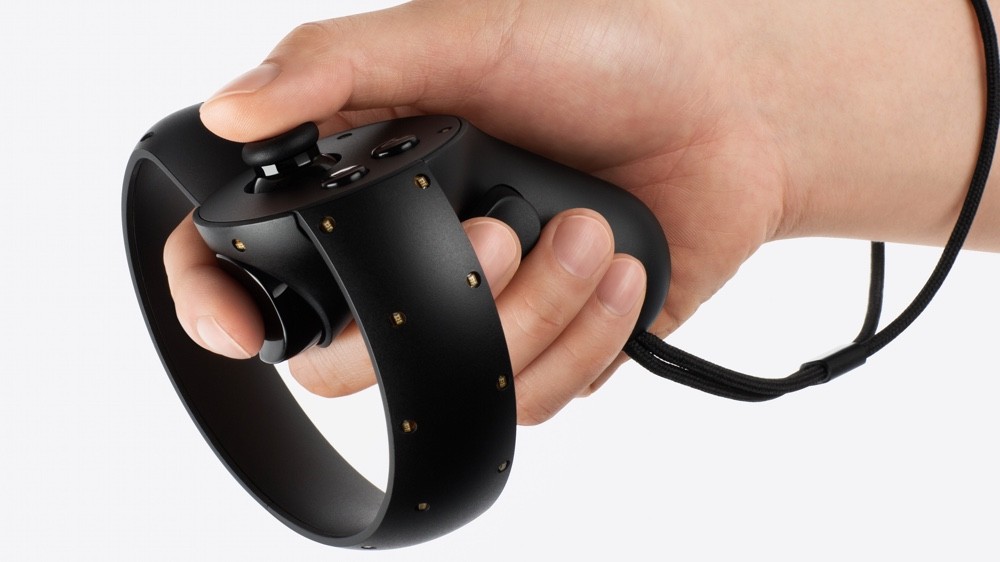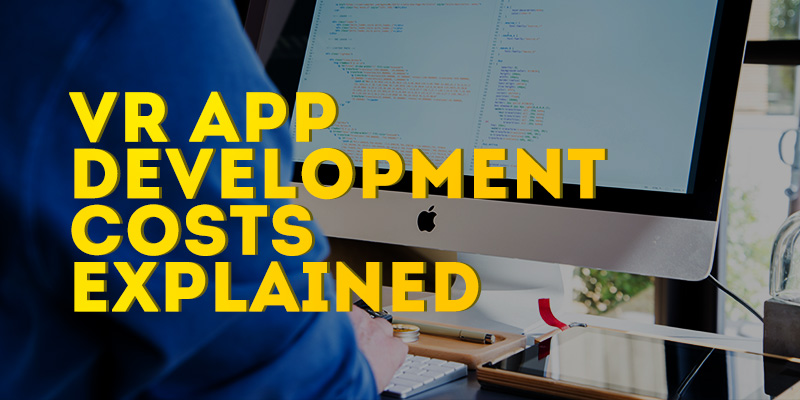No longer consigned to the world of science fiction, virtual reality is starting to look more and more like science fact. It’s only a matter of time before commercially available hardware such as HTC’s Vive and the Facebook-backed Oculus Rift become the most anticipated and sought after tech since Sony and Microsoft went head-to-head in the next-gen console wars of 2013.
As we’ve discussed in previous articles, the market for virtual reality is set to explode in the very near future, with a projected value well in excess of $100 billion by 2020. And really, the sky’s the limit for VR technology, with the ultimate goal for many technologists and futurists being a fully immersive virtual world.
But before we reach the realms of the Matrix, the applications of VR technology in the here and now are worth exploring, with potentially game changing results for many businesses.
Here we take a look at how to make VR apps, the technologies involved and the process behind.
What Do I Need to Build My Own VR Application?
We’ve put together an “at a glance” checklist for you to help you get started.
Step 1. Choose your gaming engine.
Unity works best for mobile applications, whereas Unreal has more scope for customization.
Step 2. Develop your artwork.
The visual aspect of virtual reality cannot be understated, so it’s important that you work with professionals to get this right.
Step 3. Choose your hardware.
How will the game be controlled? How will you integrate sensors such as the gyro and accelerometer to improve gameplay? How will you leverage speech recognition?
Step 4. Code the app.
This particular step should encompass everything from load times to image processing, to ensure lag and latency are kept to a minimum, otherwise your immersive VR game will fall at the first hurdle.
Step 5. Test and launch your app.
How Much Does It Cost to Develop a VR App?
By the time the bells ring out signaling the start of a new year, the total number of VR users will exceed 43 million. This is a market on the move, projected to be worth $30bn by 2020.
How Will VR Work in the Modern Era?
With the technology available to us at this moment in time, virtual reality is geared towards the creation of visual and auditory immersion via specialist hardware such as the aforementioned Oculus. Although these VR headsets will only be a few inches in front of your eyes, it will appear as if you’re looking at, and surrounded by, a real environment.
The headsets will be fitted with sensors to track your movement, allowing the content to react as you turn your head, nod, or move around. And once you add cutting edge computer graphics or 3D video into the mix, then you’ll be getting close to the concept of “presence” (which we discussed in this article). In short, experiencing “presence” will make you feel like you’re inside a virtual environment, to the point where you’ll almost forget you’re wearing a VR headset.
Types of VR Content
Now, it goes without saying that the primary market for virtual reality at the moment is going to be gaming, given that most video games are built in virtual worlds to begin with, but that doesn’t mean we won’t see other non-gaming applications, particularly when it comes to architecture and interior design, filmmaking, prototyping, and healthcare.
Film is particularly interesting, with more and more 360-degree videos finding their way onto YouTube to complement Google’s Cardboard viewer as a quick and simple means of experiencing virtual reality. As VR technology becomes more mainstream, we could see a virtual reality film industry that could compete with video games for the attention of VR headset owners.
And a little further down the line will be the inevitable merging of VR and social networking, which shouldn’t come as a surprise given that Facebook spent $2 billion in acquiring Oculus in 2014.
VR Controls
One of the major considerations for any VR application is how the user interacts with the virtual environment. For something like a 360-degree video, the user will be primarily passive, in that they are limited to moving their head and body to take in the video’s content.

Virtual Reality controllers
Source: Wareable.com
However for VR games, it’s not enough to just view the content, there must be the ability to engage with the virtual world via a set of defined controls. These will range from a console controller, to specialist controllers and motion controls.
Firstly, with Microsoft opting to remain on the periphery of VR hardware development, and instead partnering with Oculus, it’s likely that the default controller for the Oculus Rift will be the Xbox One console controller.
With a limited amount of buttons and familiar controls, this will ease a lot of gamers into the world of VR gaming, however it’s a bridging solution at best and will prevent users from feeling fully present in the virtual environment.
The specialist controllers on the market (such as racing wheels and flight sticks) will allow VR gamers to take one step closer to feeling like they’re part of a virtual world, particularly in simulator games involving racing or flying. The downside to this is the narrow applications, as these controls are only ever going to be useful in those types of games.
Which brings us to the motion controls. This will likely include anything from wand controllers (similar to the Nintendo Wii) to full body tracking, such as the Xbox Kinect. It’s the latter rather than the former that will deliver the user closer than ever to the feeling of “presence” in a virtual environment, but hand tracking motion controllers will still improve on the gaming experience when compared to console controllers.
And of course there’s the niche pieces of kit such as the Virtuix Omni treadmill, which will allow users to walk and run when exploring virtual worlds.
VR Software Requirements
Beyond the aforementioned VR headsets and controls, there are a number of software requirements that must be taken into consideration. Your application must deliver high quality visuals, leverage an industry standard gaming engine such as Unity or Unreal, and use these to create an immersive and engaging virtual world.
It’s when you need to marry all of this together that your average gaming company can come unstuck. The development of a striking virtual environment requires talented and experienced mathematicians to complement the creative work of artists and developers.
And when it comes to choosing the engine upon which to build your application, there are certainly advantages and disadvantages to consider regarding Unreal and Unity. You should note that if you plan on building your VR application for a mobile device, Unity is the better option.
In-House VR App Development vs. Outsourcing
If you’re ready to take the leap into VR app development, you must first weigh up the pros and cons of keeping said development in-house, or partnering with a VR specialist.
We have outlined some of the advantages and disadvantages of outsourcing your VR development below.
Advantages
1. Save Money and Control Costs
Paying in-house staff and providing benefits includes many hidden costs such as health, pension and more. With your outsourced team you only pay for the hours they work. But the real advantage is the learning curve - using an experienced outsourced team is much cheaper due to the experience they already gained on other projects.
2. Staff Expertise and Quality
You don’t need to spend weeks or months recruiting in-house specialists; by outsourcing your project, your development partner will have the appropriate staffing levels and necessary skillsets at your disposal, with a focus on delivering quality.
3. Equipment and Technology
By choosing to outsource your VR development project, you won’t need to invest in the most up-to-date technologies required to deliver such an application. This will be provided by your development partner, allowing you to sidestep the costs of acquiring equipment and tech and training your in-house team to use them competently.
4. Focus on the Core Business
Finally, outsourcing allows you to fully concentrate on the core performance and objectives of your business, without the distraction of managing a project outside of your team’s comfort zone.
Disadvantages
1. Issues of Control
It can be difficult to give over total control to aspects of a development project, and you may not enjoy the hands-off nature of outsourcing. It’s therefore important to carefully choose your contractor to ensure you both work in a similar manner, and share a clear understanding of the objectives of the project.
2. Employee Turnover
When hiring in-house, your employees are typically inclined to stay for longer, understanding the ethos of your company and the expectations that go along with it. The contractor’s staff may not have as much loyalty, and even during the course of a project there exists a risk that your development partner could lose key team members to more lucrative work. To avoid this, a contract must be put in place at the commencement of the project to ensure you are provided with the necessary expertise to adequately complete your VR application.
3. Managerial Redundancy
You may find that roles within your organization and that of your development partner are being duplicated, which can lead to an increase in overall cost and inefficient project management. Clearly defining roles at the beginning of a new project can help alleviate this.
4. Response Times
It goes without saying that when an issue arises during a development project, having in-house staff on hand to deal with it as it occurs is the most efficient means of resolution. To mitigate any risks you must negotiate a reasonable response time with your development partner.
How Can AppReal-VR Help?
We understand the idiosyncrasies of virtual reality development, and we’re ready to help you make waves in this most exciting marketplace. Our team of specialist developers and experienced project managers can successfully direct your project from its initial concept to visual design and custom development.
And with our strong background in both industry standard gaming engines, we can help you develop games and applications for both mobile and console platforms. Our team can also deliver the sought after feeling of “presence” in VR development thanks to our in-house expertise in image processing, speech recognition, and sensory technologies.
So if you’re ready to take your first steps into VR app development, speak to one of our friendly experts today.


